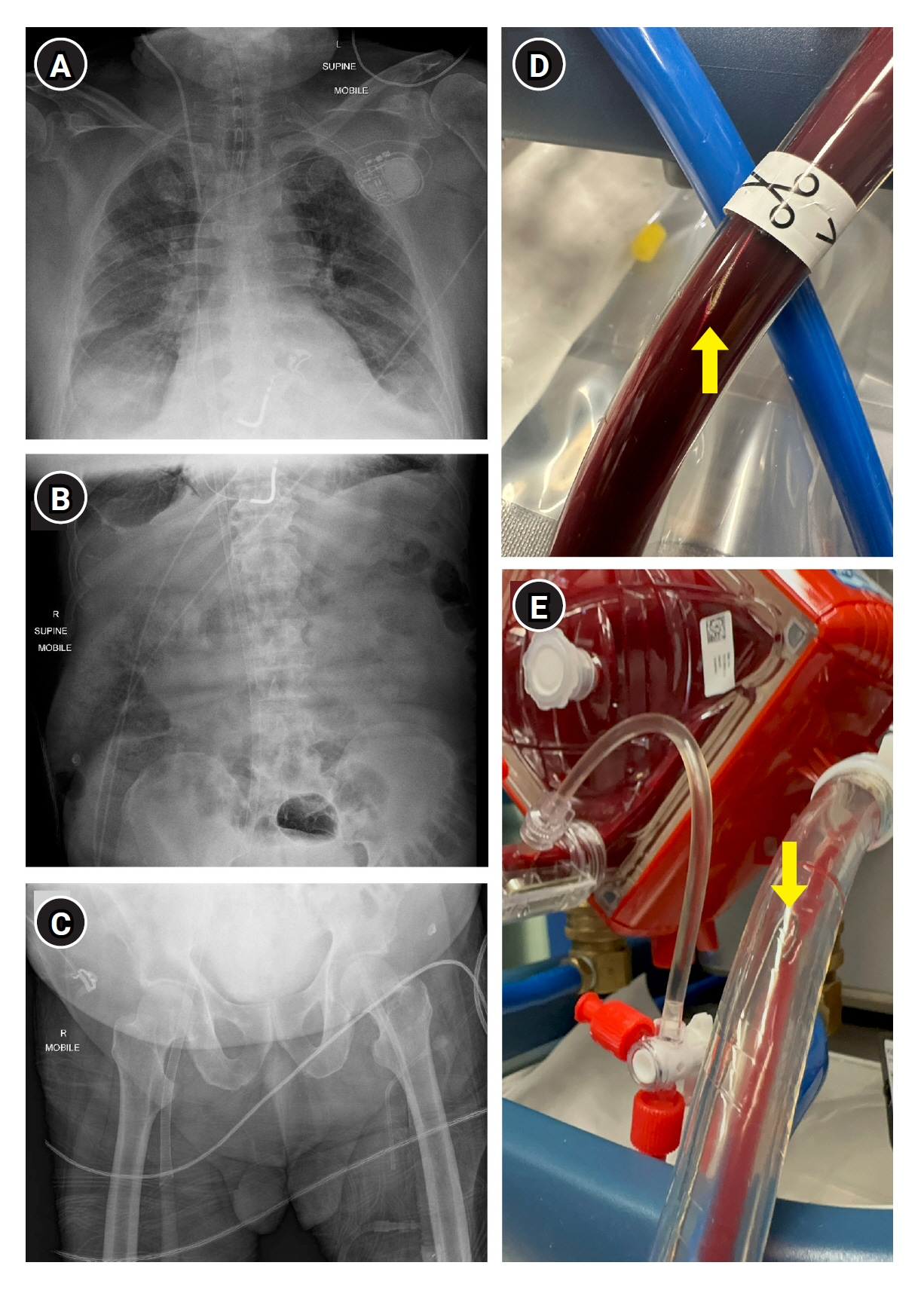Acute Crit Care.
2024 Feb;39(1):199-200. 10.4266/acc.2023.01270.
Transjugular central venous catheter guidewire embolism to venoarterial extracorporeal membrane oxygenation cannula
- Affiliations
-
- 1Intensive Care Unit, Royal Adelaide Hospital, Adelaide, South Australia
- KMID: 2555241
- DOI: http://doi.org/10.4266/acc.2023.01270
Figure
Reference
-
1. Picard L, Cherait C, Constant O, Boulanger B, Dorget A, Vodovar D, et al. Central venous catheter placement during extracorporeal membrane oxygenation therapy. Anaesth Crit Care Pain Med. 2018; 37:269–70.
Article2. Parikh GP, Shonde S, Shah R, Kharadi N. A case of guidewire embolism during central venous catheterization: better safe than sorry! Indian J Crit Care Med. 2014; 18:831–3.
Article3. Aizawa M, Ishihara S, Yokoyama T. ECMO circuit embolism: a potentially hazardous complication during ECMO therapy. J Clin Anesth. 2019; 54:162–3.
Article4. Pokharel K, Biswas BK, Tripathi M, Subedi A. Missed central venous guide wires: a systematic analysis of published case reports. Crit Care Med. 2015; 43:1745–56.
- Full Text Links
- Actions
-
Cited
- CITED
-
- Close
- Share
- Similar articles
-
- Successful Retrieval of a Fractured Guidewire during Extracorporeal Membrane Oxygenator Insertion
- Transfromation of Percutaneous Extracorporeal Life Support to Paracorporeal Ventricular Assist Device: A Case Report
- Parallel Venovenous and Venoarterial Extracorporeal Membrane Oxygenation for Respiratory Failure and Cardiac Dysfunction in a Patient with Coronavirus Disease 2019: A Case Report
- Left Atrial Decompression by Percutaneous Left Atrial Venting Cannula Insertion during Venoarterial Extracorporeal Membrane Oxygenation Support
- Extracorporeal Membrane Oxygenation Support for Dogs in Acute Respiratory Failure : Comparison of venovenous extracorporeal lung assist using a double lumen tube with venoarterial extracorporeal lung assist


